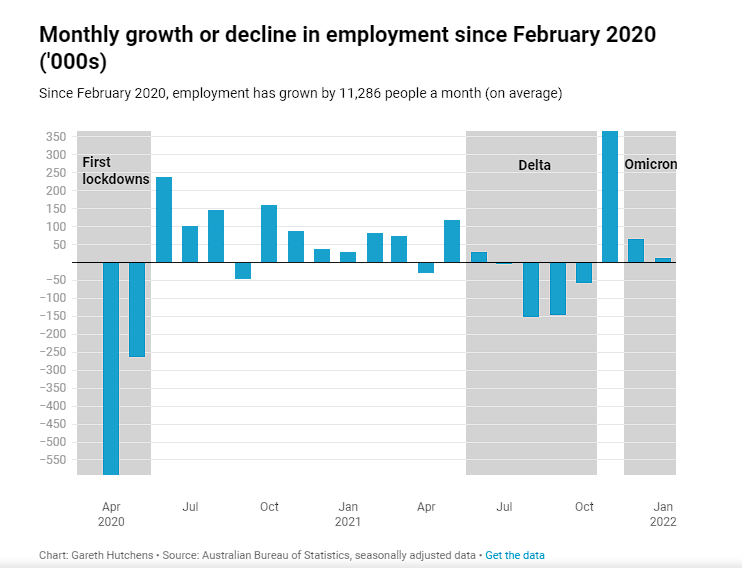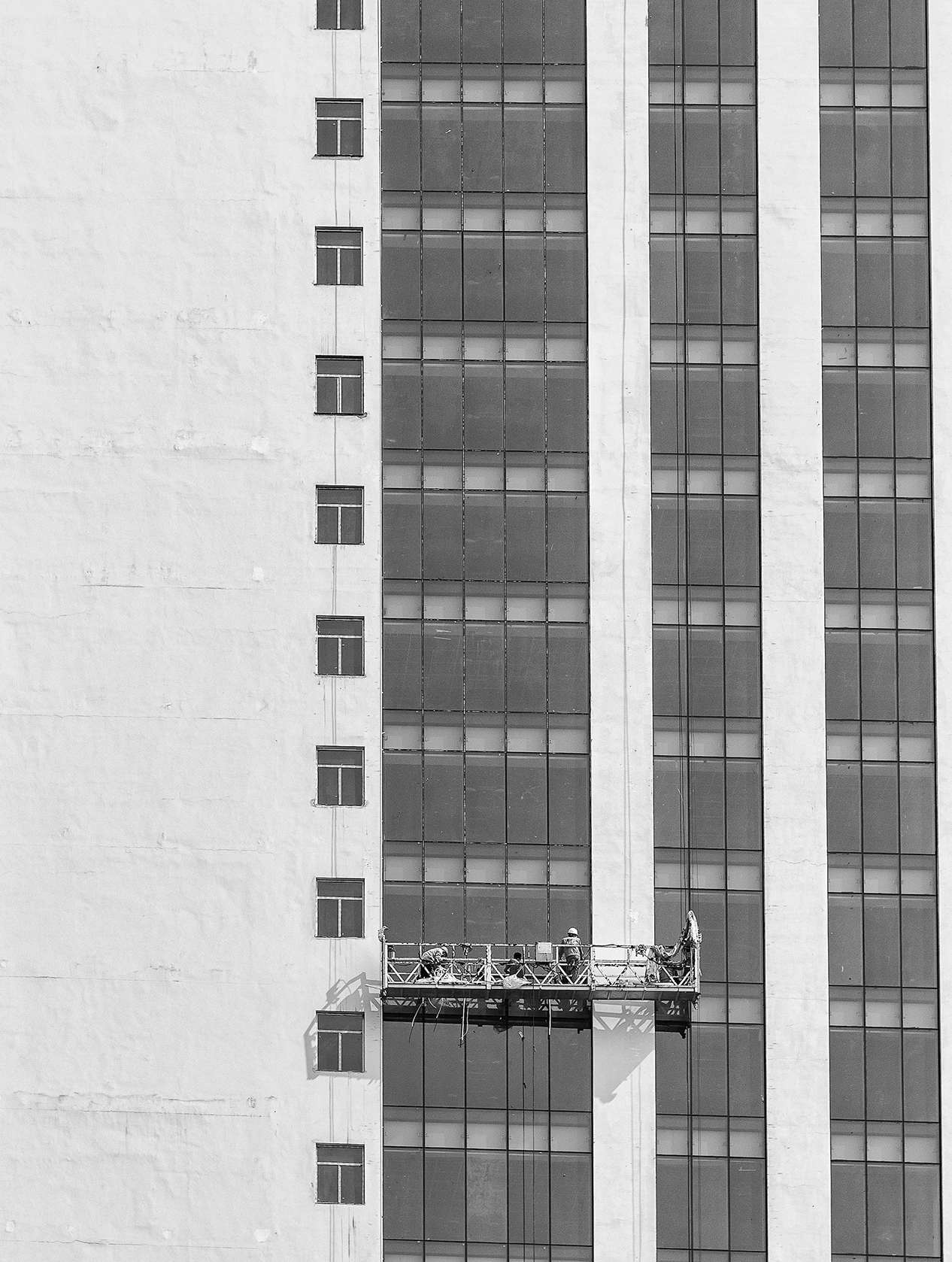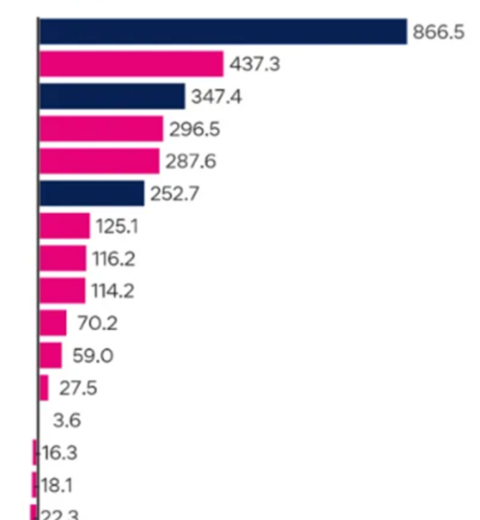Posted Fri 18 Feb 2022 By business reporters Rachel Pupazzoni and Gareth Hutchens | Article Courtesy: https://www.abc.net.au
Renee Baltov says it will be a relief when international borders reopen properly.
Key points:
- Australia’s unemployment rate remained at 4.2 per cent in January
- Nearly 13,000 jobs were created last month, despite COVID-19’s Omicron wave
- Economists say there will be ongoing demand from employers for more workers in coming months, and that the unemployment rate should keep falling
As the owner of The Barberhood in Sydney, she says it is incredibly difficult to find new staff these days.
She has tried everything.
“I can’t really see any other way than migration helping with the solution,” she tells ABC News.
“It’s much easier and much cheaper for me to hire Australian workers and, obviously, providing Australians jobs is one of my priorities, but when you’re faced with people standing at the door, no one to cut their hair and we’ve tried every other solution, migration is just part of the solution.”
Ms Baltov’s desire for more staff fits with what the stats are telling us, too.
In the past eight months, Australia’s economy has been hit by the Delta and Omicron variants of COVID-19.
However, Australia’s labour market has weathered them both.
January was the toughest month of the Omicron wave so far, with millions of hours lost to worker illness and close contacts having to isolate.
Nevertheless, employment still increased last month, by 12,900 people.
Unemployment increased too, by 5,600 people, but that’s because those people joined the labour force to look for work, giving employers a few more thousand people to choose from, to help fill vacancies immediately.
It kept the unemployment rate at 4.2 per cent, a 13-year low.
There’s a strong, underlying demand from employers for more staff, despite the challenges posed by the more-contagious Omicron variant circulating in the community.

It’s a sign of the “tight” labour market conditions employers such as Ms Baltov are talking about.
“My industry [already] had significant staff shortages but, obviously, with the border closing, it has been impacted to the point where there is nobody able to work other than the current staff that I had already employed,” she said.
“There’s just not enough Australian workers or apprentices, no amount of retraining Australians or apprenticeships is making up for that demand.
“So, even though the borders are opening [soon], we still need more than what we currently have in this country applying for jobs.”
A good market for some job seekers
The experience of some workers tells the other side of the story.
Software engineer Carl Connell has just started a new job with Brisbane mining technology firm Plotlogic.
The company more than doubled its workforce in 2021, and it expects to double that again in 2022, with plans to grow to a team of 100.
It’s been growing despite the pandemic.
“I was sitting at my desk one day at my previous job and Greg called me up and said, ‘Why don’t you come down and see the place’ and I was very excited to see the whole workshop and the robots,” Mr Connell told ABC News.
“Then I got offered the job.”
Mr Connell said his experience working for a variety of companies, and in a range of countries, made him sought-after by the business which is in a growth phase.
He’s looking forward to growing with the company.
“When I got offered the job, it just seemed like there were so many opportunities here for me to learn and grow,” he said.
He’s enjoying the collaborative environment of his new workplace.
Underlying strength in the economy
Economists say there should be ongoing strong demand for workers from here, and it will push the unemployment rate lower through 2022 — even with the level of sickness in the economy.
In January, there was a sharp, 8.8 per cent fall in hours worked, with a large spike in workers taking sick leave or in isolation due to the rapid uptick in COVID-19 cases.
Sean Langcake — the head of macroeconomic forecasting for BIS Oxford Economics — says that high levels of sick leave did not cause employment to fall, and it was a very positive sign.
“The number of workers on sick leave was around 4.5 times higher than the usual January level, and more than double the usual mid-winter peak,” Mr Langcake said.
“These data show us that connections between workers and their employers have been preserved through the Omicron wave, something that was achieved through significant policy interventions in previous waves.
“This puts the labour market on a strong footing moving forward.,” he said.
Borders reopening to fully vaccinated travellers
Ms Baltov says she welcomes the news that Australia’s border will start partially reopening next week, but she does not expect a rapid influx of migrant workers knocking on her door.
“I would say it will be a slow burn,” she said.
“What I would really like to see is some of that [visa] red tape cut and the government look at how hard it is for small business at the moment and to make it easier for those people to come through.”
She says she has spent tens of thousands of dollars sponsoring one of her employees, a barber who migrated to Australia from England seven years ago, and she’s still trying to find a way for him to stay permanently.
“The great thing about migrant workers is that they are really diverse and they make up all parts of the industry,” she said.
“They teach our Australian barbers and hairdressers things that they may not necessarily learn in this country, and vice versa.
“So it’s great for working conditions to have people from all over the world, mingled together, and it’s also great for clients who get to see different styles coming from other parts of the world.”




